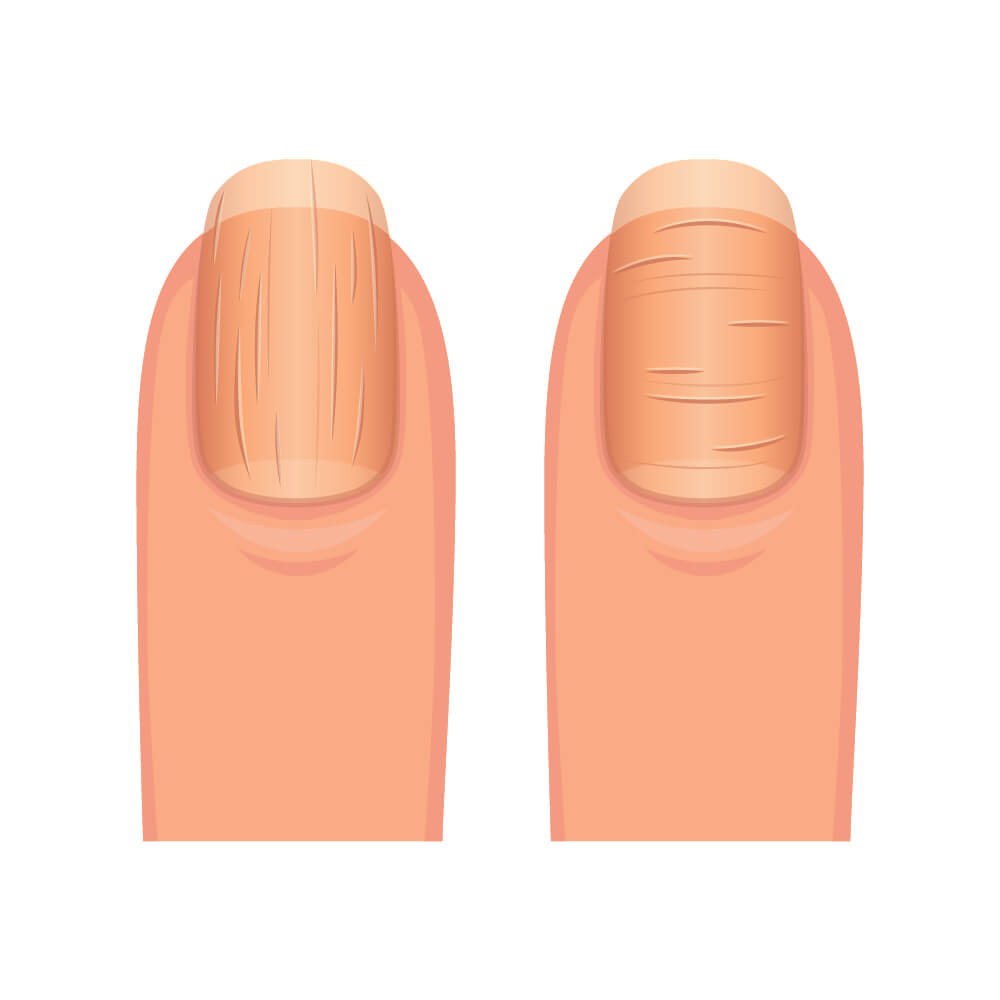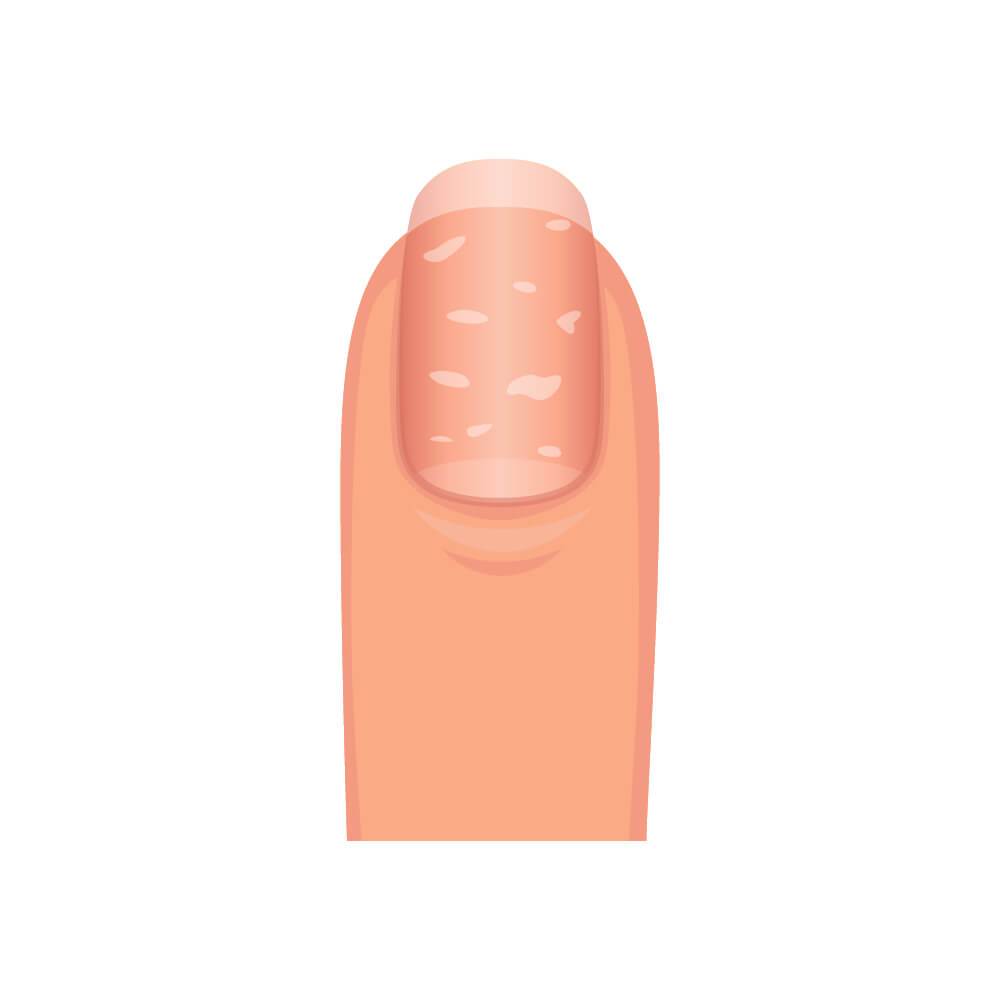Nail your health: clues from your cuticles
Did you know your nails are a window into your health? Here are six health lessons at your fingertips.
Your nails might not be the first place you look to for signs that everything is going great in your life but surprisingly, you can tell a lot about your overall health from your nails.
It turns out that nail health is closely linked to how well your body is functioning and that nail changes could indicate problems with different parts of your body.
Normal fingernails generally have white tips, are smooth and have a shine. Nail beds are flesh-coloured, and cuticles are intact. If you notice your nails starting to look a bit different for no obvious reason, then it’s possible they may indicate a deeper issue with your overall health.
So, taking a good look at your nails, particularly at their texture, colour and shape, is one way to keep an eye on things.
Six nail conditions and what they mean for your health
- Brittle nails (Onychoschizia)

Brittleness or nail splitting is one of the most reported nail problems. If your fingernails split, but your toenails are not, an external factor could be the cause.
Common causes: Repeated wetting and drying of your fingernails are most likely to be the cause of brittle nails (did anyone else start running through the happy birthday washing your hands routine?) Overdoing it with nail polish remover, frequent dishwashing, or swimming can also contribute to brittle nails.
Less common causes include an underactive thyroid and iron deficiency. You can check for both these conditions using one of our blood tests.
Solutions: Once you’ve identified the cause, you can minimise your brittle nails by wearing gloves when performing activities that involve getting your hands wet, applying lotions containing alpha-hydroxy acids or lanolin, or treating iron-related or thyroid conditions.
- Ridges (vertical or horizontal)

Most of the time, ridges in fingernails are harmless. Vertical ridges extend from the cuticle to the tip of your nail and are seen more often in older adults, possibly due to a slowing of cell turnover.
Common causes: Most commonly, vertical ridges are from ageing – think about them like the wrinkles of your nails. Less common causes include iron deficiency, psoriasis, and eczema. As long as the vertical ridges are not accompanied by colour, shape, or other texture changes, they are generally not a cause for concern.
Horizontal ridges, also called Beau’s lines, may be caused by a kidney problem or other underlying health conditions. Please consult with your doctor if you notice horizontal ridges.
Solutions: For vertical ridges caused by ageing, you can focus on keeping your nails and cuticles moisturised and gently buffing the surface of your fingernail to help smooth vertical ridges.
- Yellow nails

Healthy nails are usually translucent. They look pink because of the blood vessels supplying the nail bed. However, your nails can turn a shade of yellow.
Common causes: Excessive nail polish or a fungal infection are the most frequent reasons for yellow nails.
Yellow nails can also be caused by an underlying health condition such as a thyroid problem, psoriasis, or diabetes.
Solutions: In the case of excessive nail polish, stopping its use for at least a week should help. Fungal infections are treated using an oral or antifungal medication, but you can also try tea tree oil and vitamin E to help. You can prevent a fungal infection altogether by ensuring good nail hygiene: trimming and washing your nails frequently and being cautious with nail salons and spas.
- Black lines

Most commonly, narrow black lines that appear vertically underneath your nail are due to what is known as linear melanonychia, which is considered a normal colour variation.
Common causes: This is frequently seen in individuals of Afro-Caribbean descent and occurs when there is excessive pigment production. Another harmless cause of black lines is a splinter haemorrhage, which occurs when blood vessels under the nail are damaged due to trauma.
Less commonly, black lines may suggest an underlying health condition such as psoriasis, a long-term treatable skin condition, and nail melanoma, a serious skin cancer.
Solutions: If due to trauma, the black lines should disappear with time as your nail grows. Consult with your doctor if they remain after a few weeks, especially if accompanied by night sweats or bleeding in the nail.
- Pitting nails

Pitting is often described as little indents in the nail.
Common causes: Minor pitting may be normal. Deep pitting, on the other hand, especially with yellow or thick nails or nail splitting, can be due to a long-term skin condition such as psoriasis or eczema.
Solutions: Please consult with your doctor if you notice pitting of your nails.
- Clubbing

Clubbing of the fingers is a condition in which the fingernails are curved downward, feel soft when pressed, and where the tips become swollen.
Common causes: This can run in the family - but more often is found in persons with chronic health problems such as heart, lung, liver, or thyroid disease.
Solutions: Please consult with your doctor if you notice clubbing of your fingers.
Nail changes guide
| Problem | Common cause | Solution |
| Brittle nails | Frequent wetting and drying | Wear gloves and use a moisturiser with alpha-hydroxy acids or lanolin |
| Ridges | Ageing (vertical) or underlying health condition (horizontal) | Gently buff surface of the affected nails (vertical) or consult with your doctor (horizontal) |
| Yellow nails | Reaction to product or fungal infection | Stop exposure to product and nail should become normal with time. Use topical or oral antifungal medication in the case of an infection. Tea tree oil or vitamin E may also help |
| Black lines | Common in Afro-Caribbean people or due to injury | Nails should become normal with time in the case of an injury. Otherwise, consult with your doctor |
| Pitting | Psoriasis or eczema | Consult with your doctor |
| Clubbing | Chronic health problem | Consult with your doctor |
What do healthy nails look like?
Healthy nails should be smooth, translucent, and without ridges, spots or discolouration. Nail changes can occur, but most are harmless. If you are ever concerned about changes to your nails, please consult with your doctor.
The most common nail changes, such as vertical ridges, are usually not accompanied by symptoms and are generally not a cause for concern. Other nails changes, such as pitting and clubbing, may point to some underlying medical problems.
You can keep your nails healthy by following a balanced diet and having good nail hygiene.
Tips for good nail hygiene:
- Keep your nails dry and clean
- Wear rubber gloves if you are often wetting your hands or using cleaning agents
- Trim your nails regularly
- Avoid nail-biting or picking
- Don’t remove cuticles or clean too deeply (which can lead to infection)
- Apply a moisturiser to your nails and cuticles daily
- Limit the use of nail polish remover (opt for acetone-free formula when using one)
- Eat a healthy and balanced diet
- Consider a biotin supplement to strengthen weak and brittle nails (although this can affect certain blood test results)
Concerned about changes to your hair or skin? Head over to our blog on what is your body trying to show you? Or, to find out more about which Medichecks blood test may be right for you, go to our test finder.
References
- Cleveland Clinic. 2019. 6 Things Your Nails Say About Your Health. [online] Available at: <https://health.clevelandclinic.org/2015/05/6-things-your-nails-can-say-about-your-health/> [Accessed 6 April 2022].
- NHS. 2021. Nail problems. [online] Available at: <https://www.nhs.uk/conditions/nail-problems/> [Accessed 6 April 2022].
- Mayo Clinic. 2022. Fingernail do's and don'ts. [online] Available at: <https://www.mayoclinic.org/healthy-lifestyle/adult-health/in-depth/nails/art-20044954> [Accessed 6 April 2022].
- WebMD. 2020. What Your Nails Say About Your Health. [online] Available at: <https://www.webmd.com/skin-problems-and-treatments/ss/slideshow-nails-and-health> [Accessed 6 April 2022].
- Penn Medicine. 2022. What Your Nail Health Can Tell You: Don’t Ignore These Signs. [online] Available at: <https://www.pennmedicine.org/updates/blogs/health-and-wellness/2019/january/nail-health> [Accessed 6 April 2022].
Related tests
Monitor your thyroid health and detect any imbalances with our Thyroid Function Blood Test
- Results estimated in 2 working days
- 3 biomarkers
Finger-prick or Venous collection
Select testFeeling constantly tired or struggling with low energy? Your iron levels could be the reason
- Results estimated in 3 working days
- 5 biomarkers
Finger-prick or Venous collection
Select testTake control of your health with the Diabetes (HbA1c) Blood Test, designed to measure your average blood sugar levels over the past 12 weeks
- Results estimated in 3 working days
- 1 biomarkers
Finger-prick or Venous collection
Select test
